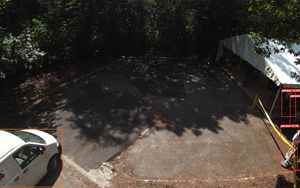(Finance) – Latest generation drones for finding people lost in the snow and for reaching inaccessible places in the shortest possible time. This is what he experienced Aeneas with Civil Protection, Sapienza University of Rome And the society Red-Tech as part of a series of exercises in the Roccaraso ski area (L’Aquila).
The missions, conceived and coordinated by Valentino Arillo of the Civil Protection of Civitavecchia, – explains Enea in a note – have been completed thanks to the use of different drones also equipped with thermal imaging cameras and 360 degree cameras, making corrections and changes at the end of each session.
“For about a year, our laboratory has begun to focus its experience on technologies based on drones, to extend its applications in the fields of safety and security, radiology and chemicals, monitoring of nuclear plants and oil platforms and three-dimensional surveying of works of ‘medium and large art, “he explains Massimiliano Guarneri ENEA researcher of the Diagnostics and Metrology Laboratorycontact person for the project.
The emerging activity – reads the note – combines more consolidated technologies developed within the laboratory with the aim of evaluating the limits and potential offered by existing technologies through training in the field in order to extend or improve them with the development of specific instrumentation and algorithms for data processing, also based on the use of Artificial Intelligence.
“At the end of the two days of exercises, – he continues Guarneri – there was an unexpected case of a woman who felt ill on the slopes and whose exact location was not known. At the request of the local authorities, a reconnaissance with a drone was carried out and in a few minutes it was possible to give the coordinates to allow the rescuers to reach the precise place “.
Through the use of a FPV drone (First Person View) for the three-dimensional reconstruction of a snow-covered area on which an exercise had been carried out to find missing people, data were acquired at an altitude of over 30 m and it was possible to detect some traces left by the snow cats that passed a little earlier.
Furthermore, Enea is completing the adaptation of one Neural Network for the identification of people on videos obtained from 360-degree cameras. The same technologies and methodologies were also used in the INCLUDING project coordinated by Luigi De Dominicis, head of the Enea Division of Physical Technologies for Safety and Health. In this case – says Enea – it was a demo in the forensic field on CBRN (chemical-biological-radiological-nuclear) issues for the survey by drone and neural networks of both objects and people in the field and for reconstruction near real-time 3D scene through the use of “Instant Neural Graphics Primitives” algorithms, recently introduced by the US company NVIDIA Corporation. Although not yet ripe for intensive use in the professional field, these algorithms – concludes Enea – have characteristics that allow images rich in optical-physical information to be clearly superior to the standards of professional programs for the reconstruction of 3D models.
